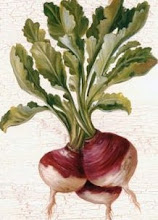 Modern Rome ? Campo Vaccino (1839) Photo: National Gallery Of Scotland
Modern Rome ? Campo Vaccino (1839) Photo: National Gallery Of Scotland Turner & Italy begins in 1802, when the Peace of Amiens made travel on the Continent possible for British artists, and J M W Turner crossed the Alps for his first, brief glimpse of the country that was to play such a crucial role in his art.
What is so striking about the first oil paintings resulting from this early contact with Italy is how relatively conventional they are, at least by comparison with what was to come. Take, for example, Château de St Michael, Bonneville, Savoy, a view of a country road shown in deep perspective to lead the eye to distant mountains, which hangs in the first gallery. Technically, it is nothing less than masterly. But it is still "only" a view of nature seen through the lens of Old Masters like Poussin and Gaspard Dughet. Turner had not yet learned to think of his landscapes as repositories for his thoughts on history, poetry, philosophy and morality.
The resumption of war with France and its aftermath meant that Turner had to wait 17 years before his next journey to the south. During that period he learned everything he could about Italy's geography, architecture, culture and history.
Not surprisingly, given the reverence he had been taught to feel for the Old Masters, Turner believed that in a great work nature is idealised because the artist appeals to the imagination and not simply to the eye. Like all his contemporaries, Turner assumed that there was a hierarchy of subject matter in art – with the most important, history painting, at the top, landscape and portraiture somewhere in the middle, and genre painting at the bottom.
In this show, we can see that Turner went to Rome in 1819 expecting the landscape to look as it did in the paintings of Claude Lorrain.
In one of his first "Italian" landscapes, Lake Avernus – Aeneas and the Cumaean Sibyl (1814-15), the Virgilian subject and idealised surroundings reveal that, before he had set foot in central Italy, he was thinking of Claudian landscape as the inevitable setting for imagined scenes drawn from classical literature. Clearly, he left London with his head stuffed with visions of ancient, not modern, Italy. TheTamshee says: click here to continue reading this detailed account of Turners travels in Italy, scribed by Richard Dorment courtesy of the Telegraph
What is so striking about the first oil paintings resulting from this early contact with Italy is how relatively conventional they are, at least by comparison with what was to come. Take, for example, Château de St Michael, Bonneville, Savoy, a view of a country road shown in deep perspective to lead the eye to distant mountains, which hangs in the first gallery. Technically, it is nothing less than masterly. But it is still "only" a view of nature seen through the lens of Old Masters like Poussin and Gaspard Dughet. Turner had not yet learned to think of his landscapes as repositories for his thoughts on history, poetry, philosophy and morality.
The resumption of war with France and its aftermath meant that Turner had to wait 17 years before his next journey to the south. During that period he learned everything he could about Italy's geography, architecture, culture and history.
Not surprisingly, given the reverence he had been taught to feel for the Old Masters, Turner believed that in a great work nature is idealised because the artist appeals to the imagination and not simply to the eye. Like all his contemporaries, Turner assumed that there was a hierarchy of subject matter in art – with the most important, history painting, at the top, landscape and portraiture somewhere in the middle, and genre painting at the bottom.
In this show, we can see that Turner went to Rome in 1819 expecting the landscape to look as it did in the paintings of Claude Lorrain.
In one of his first "Italian" landscapes, Lake Avernus – Aeneas and the Cumaean Sibyl (1814-15), the Virgilian subject and idealised surroundings reveal that, before he had set foot in central Italy, he was thinking of Claudian landscape as the inevitable setting for imagined scenes drawn from classical literature. Clearly, he left London with his head stuffed with visions of ancient, not modern, Italy. TheTamshee says: click here to continue reading this detailed account of Turners travels in Italy, scribed by Richard Dorment courtesy of the Telegraph


1 comments:
turner's 2 italian landscape paintings, 'campo vaccino' and 'the fountain of indolence', will very sadly be up for sale in july at christie's. boo hoo hoo!
the herald of glasgow has got the news out.
Post a Comment